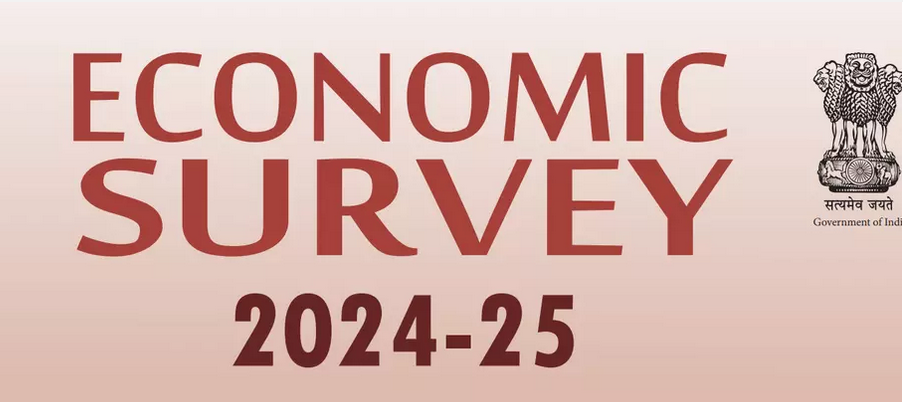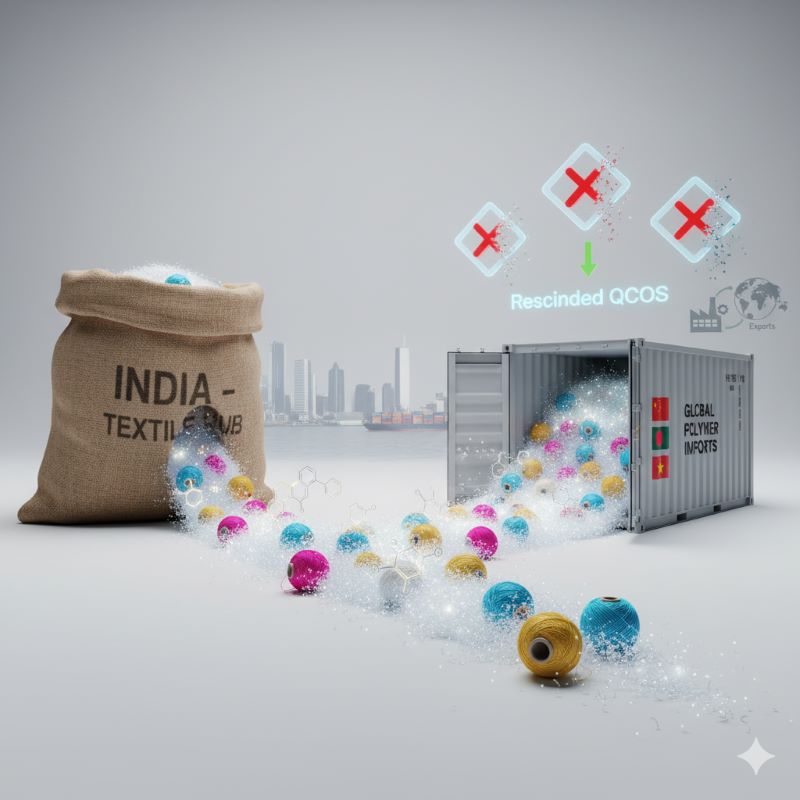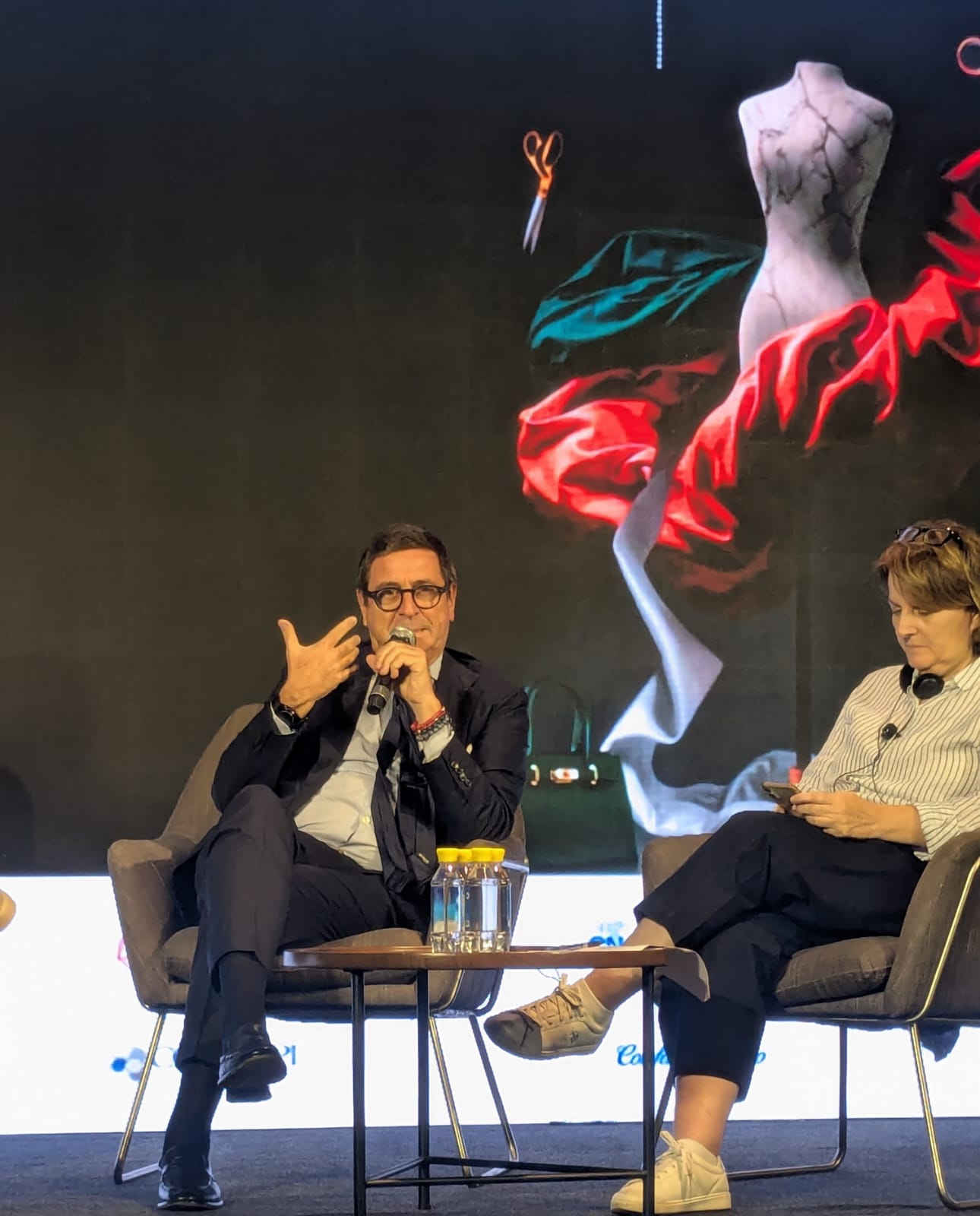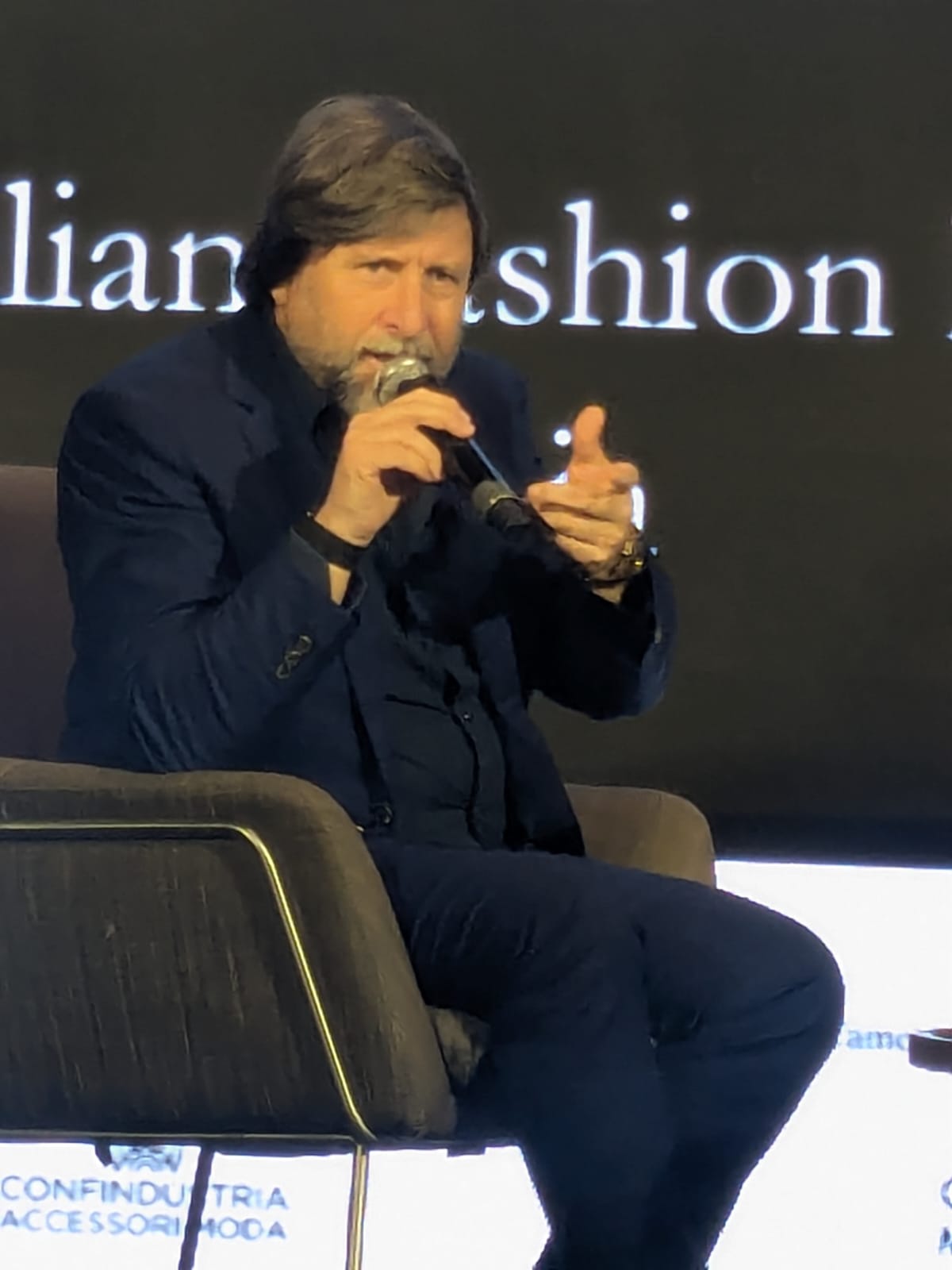FW
Italian denim brand Cycle aims to double revenues to €5 million by FY26, further expanding these to €10 million in coming years.
The brand also plans increase its turnover to €90 million by FY24-end, achieving 20 per cent of it through exports. The Numero 8-owned will expand both its domestic as well as international operations by focusing on the denim segment, and launching new knitwear and women’s accessories. Another of its plans includes expanding into the men’s segment in the medium term.
Founded in 2000, Cycle currently has 350 stores, most of these located in Italy. The company also has a few direct customers in Europe and Korea and plans to launch a whole sale in Japan soon.
The brand has developed a new knitwear collection for the winter season. Made in Italy, with 70 per cent of it manufactured by workshop in Veneto, the collection boasts of environmentally-friendly fabrics and washes. Besides collaborating with various Italy-based laundries for its denim washes, the company has also developed new sustainable and recyclable packaging for this collection, notes Enrico Spinazze, Founder, Numero 8.
Aiming to grow at all levels, Numero 8 also plans to expand its workforce by adding new employees, both at the commercial level for foreign development and at the internal level, adds Spinazze.
At the last Pitti Uomo show, Cycle showcased its range of denim jackets and trousers with a used look obtained by processes such as waxing. Treated to create irregular aged effects, these garments are available in grey-black and brick variants.
The brand has also introduced a light blue denim jacket with horizontal stitching for the season. Available with a cold-proof padding for both male and female customers, the jacket is suitable for both autumn and winter seasons.
Cotton production in India is expected to increase by 2 lakh bales to 304.25 lakh bales in 2024-25. This rise will mainly be driven by a higher-than-expected production in Telangana, as per a report by the Cotton Association of India (CAI). This revision in crop production estimates have also caused cotton prices to decline by 0.91 per cent to Rs 52,370.
Cotton production in North India is projected to decline by 3.5 lakh bales during the season while consumption is forecasted to increase by 2 lakh bales to 315 lakh bales. Supported by a higher output in India and Argentina, global cotton production is projected to 117.4 million bales in 2024-25, as per the WASDE report.
Meanwhile, cotton kapas arrivals in North Indian states of Punjab, Haryana, and Rajasthan declined by 43 per cent drop in kapas arrivals until November 30 compared to last year. This led some farmers to withhold supply resulting in raw material shortages for ginners and spinners in Punjab. Despite these factors, cotton prices in India continue to remain stable due to an increased demand from the garment industries and strong export orders. As of December-end, total cotton supplies in India stood at 176.04 lakh bales, with consumption reaching 84 lakh bales and exports at 7 lakh bales.

The Economic Survey 2024-25, released ahead of the Union Budget, presents a comprehensive analysis of the Indian economy, with a dedicated section on the textile and apparel industry.The survey acknowledges the sector's significant contribution to GDP, employment, and exports, but also highlights the challenges it faces in the global market.
Key highlights
Global market share: The survey reveals that India's textile export market share in 2023 was a mere 2.8 per cent, significantly lagging behind China (30 per cent), Bangladesh (9 per cent), and Vietnam (7 per cent). This underscores the need for India to enhance its competitiveness in the global arena.
Complex procedures: The survey points out that complex procedures and pre-shipment inspection certificates hinder the growth of textile exports. These bureaucratic hurdles increase costs and slow down logistics, making it difficult for Indian exporters to compete with their counterparts in other countries.
Decline in exports: After reaching a peak of $44.4 billion in FY22, India's textile and apparel exports have declined to $35.8 billion in FY24. This decline is attributed to various factors, including global economic slowdown, rising costs, and procedural bottlenecks.
Shift to MMF: The survey emphasizes the global shift towards man-made fibers (MMF) and suggests that India should focus on increasing its MMF production to capture a larger share of the global market. Currently, MMF constitutes 77 per cent of global fiber consumption, while cotton accounts for only 22 per cent.
Need for simplification: The survey calls for simplification, consolidation, and elimination of complex procedures that burden textile exporters. It suggests that addressing these challenges can significantly reduce costs and improve efficiency, making Indian exporters more competitive.
Data and Statistics:
Metric Data India's Textile Export Share 2.8% (2023) China's Textile Export Share 30% (2023) MMF Share in Global Consumption 77% (2024) India's MMF Production Share 9.20% Textile & Apparel Exports $35.8 billion (FY24)
Challenges and recommendations
Complex procedures: The survey recommends simplifying export procedures and eliminating unnecessary documentation to reduce costs and delays.
MMF focus: The survey suggests promoting MMF production through investments in research and development, technology upgrades, and skill development.
Infrastructure development: The survey highlights the need for improved infrastructure, including logistics, transportation, and warehousing, to facilitate smooth movement of goods.
Skill development: The survey emphasizes the importance of skill development programs to enhance productivity and innovation in the textile sector.
Trade agreements: The survey suggests exploring new trade agreements and strengthening existing ones to gain better access to international markets.
Case studies
The Economic Survey cites the success stories of countries like China and Vietnam, which have achieved significant growth in textile exports through strategic policies and investments. These case studies highlight the importance of government support, infrastructure development, and focus on MMF production.
Critical analysis by industry experts
Industry experts have lauded the Economic Survey for its comprehensive assessment of the textile and apparel industry and its focus on addressing the challenges faced by the sector. However, some experts have also pointed out certain areas that need further attention.
Focus on MSMEs: While the survey acknowledges the dominance of MSMEs in the sector, some experts believe that it should have provided more specific recommendations for promoting their growth and competitiveness. They suggest that MSMEs need targeted support in terms of technology upgrades, access to finance, and marketing assistance. (Source: "Economic Survey 2024-25: A Critical Analysis of the Textile Sector" - Textile Association of India)
Sustainability: The survey briefly mentions the need for sustainable sourcing, but experts believe that it should have emphasized this aspect more strongly. With increasing global focus on sustainability, Indian textile exporters need to adopt eco-friendly practices to remain competitive. (Source: "Sustainability in the Textile Industry: Challenges and Opportunities" - Confederation of Indian Textile Industry)
Labor laws: Some experts have pointed out that the survey does not address the issue of labor laws, which are considered to be complex and restrictive in India. They suggest that simplifying labor laws can help attract more investment and boost employment in the sector. (Source: "Impact of Labor Laws on the Textile Industry" - Indian Texpreneurs Federation)
Aligning with shift towards MMF, a critical need
"India needs to align with the global shift towards MMF to capture a larger share of the international textile market ", says Economic Survey 2024-25. The Economic Survey 2024-25 provides a comprehensive overview of the textile and apparel industry in India. While it acknowledges the challenges faced by the sector, it also offers valuable recommendations for boosting its growth and competitiveness.
Home textiles major Welspun Living reported a 31 per cent decline in consolidated net profit to Rs 123 crore ($14.2 million) in Q3, FY25 ending December 2024, compared to Rs 179 crore in the same quarter last year.
From Rs 2,411 crore in Q3, FY24, Welspun’s revenue increased to Rs 2,490 crore in Q3,FY25. The company’s expenses also heightened to Rs 2,369 crore, compared to Rs 2,214 crore in the same period a year ago.
According to BK Goenka, Chairman, Welspun Group, says, the company achieved a 3 per cent growth in consolidated revenue in Q3, FY25. Welspun Living remains committed to redefining home solutions sustainably while establishing itself as the 'FMCG of Textiles,’ he adds.
The company’s core growth areas including global brands, domestic consumers, advanced textiles, and flooring, grew by 10 per cent in 9M FY25, providing a competitive edge. The company’s domestic consumer business increased by 2 per cent Y-o-Y despite inflation and cautious spending, while the ‘Welspun’ brand reinforced its leadership position in hometexitles with a 8 per cent Y-o-Y growth, he adds.
A part of the Welspun Group, Welspun Living is among the world's largest home textile manufacturers, with a strong presence in the bed, bath, and flooring segments.
Consolidating its leadership position, Miu Miu has once again topped Lyst’s coved Index for the hottest brand in fashion in Q4, FY24 The sister brand of Prada had also claimed the title in Q3 and Q1, making it the undisputed champion of 2024.
Trailing closely behind at number two, Saint Laurent pushed Jonathan Anderson's Loewe down to fourth place. Loewe briefly dethroned Miu Miu in Q2, largely thanks to Anderson's designs for the film ‘Challengers’ and Zendaya's accompanying press tour. Saint Laurent's Q4 success was also linked to film, as the brand produced and costumed ‘Emilia Pérez,’ a top contender at the 2025 Oscars.
Making a significant leap, Coach climbed ten spots to number five. Its Brooklyn Bag topped Lyst's Hottest Fashion Products list, with demand skyrocketing 65 per cent Q-o-Q and a staggering 332 per cent Y-o-Y. Lyst attributes Coach's surge partly to competitive discounts during sales, making its trendy styles more accessible to younger consumers.
A newcomer to the list, Ugg, entered at number ten. Searches for its iconic fluffy boots increased by 358 per cent in Q4 and 12 per cent year-on-year. Cos, H&M Group's minimalist contemporary line, also joined the rankings at number 17, experiencing a 16 per cent rise in demand, primarily driven by its Pure Cashmere Sweater (a dupe for a design by ninth-hottest brand, The Row).
Several emerging designers also saw impressive growth. Searches for Charlotte Simone increased by 242 per cent after Taylor Swift was spotted wearing its vintage-inspired coat. Other rising indie brands in Q4 include Stockholm-based ready-to-wear label Our Legacy (+22 per cent), contemporary handbag brand Demellier (+119 per cent), and Japan-based Japanese clothing brand Auralee (+114 per cent).
Levi Strauss & Co’s Q4, FY24 net revenues rose by 12 per cent on a reported basis and 8 per cent organically to $1.8 billion. The company registered a strong growth across all regions, with revenues in Americas increasing by 12 per cent on a reported basis and 9 per cent organically.
Net revenues in Europe grew by 15 per cent on reported basis and 6 per cent organically, while Asia while a 9 per cent increase both on a reported basis and organically.
The company's diversified brand portfolio also contributed to the positive results. Revenues of other brands, including Dockers and Beyond Yoga, also increased. Revenues of Dockers increased by 9 per cent on a reported basis and 5 per cent organically while revenues of Beyond Yoga expanded 10 per cent on a reported basis and 4 per cent organically.
A standout performer at Levi Strauss & Co was its direct-to-consumer (DTC) business was with net revenue from the segment growing by 19 per cent on a reported basis and 14 per cent organically. The company witnessed strong DTC growth across regions, including an 11 per cent increase in the US, 17 per cent in Europe, and 8 per cent in Asia. The company’s e-commerce sales also increased by 19 per cent on a reported basis and 14 per cent organically. Currently, the company generates 45 per cent of its organic net revenue from the DTC segment.
The company ‘s strong focus on its core brand Levi’s is working with broad-based growth being witnessed across women’s, men’s, DTC and wholesale segments, says Michelle Gass, President and CEO. The company's transformation into a best-in-class omnichannel retailer, highlighting a robust product pipeline, continued marketing efforts with Beyoncé, and ongoing retail expansion are key drivers for future growth, Gass emphasizes
Harmit Singh, CFO and Growth Officer, adds in Q4, FY24, the company’s revenue accelerated to 8 per cent on an organic basis as DTC profitability improved significantly, cash flow generation remained strong and bottom-line results were better than exepced. The company's 2025 guidance predicts higher organic revenue growth and continued expansion in profit margin, driven by strong demand trends, improving execution, and the focus on the Levi’s brand, he adds.
For FY 2024, Levi Strauss’ net revenues increased by 3 per cent Y-o-Y to $6.4 billion on both a reported and organic basis. Its gross margin improved to 60 per cent, up 310 basis points, while operating margin increased 4.2 per cent. From 9 per cent in FY23, Adjusted EBIT margin rose to 10.2 per cent in FY24. The company’s net income during the fiscal year increased to $211 million, with adjusted net income expanding to $503 million from $441 million in the prior fiscal year. The company also achieved record adjusted free cash flow of $671 million and returned $289 million in capital to shareholders, a 45 per cent increase from the previous fiscal year.

Mexico's recent policy shifts in the apparel industry are creating a complex interplay between fostering domestic production, reducing reliance on China, and acknowledging the continued importance of Chinese imports for sustaining its own exports. While incentives for nearshoring aim to attract manufacturers and boost local sourcing, rising tariffs on textiles and finished apparel products raise questions about Mexico's long-term strategy and its relationship with China in this sector.
Growing focus on ‘Made in Mexico’
President Claudia Sheinbaum's ‘Plan Mexico’ with a focus on nearshoring and tax benefits for local and foreign companies, signals a clear intention to strengthen Mexico's domestic apparel industry. The government's push to increase Mexican-made components in various sectors further underscores this commitment. "What isn't made here can be made here," says Francisco Cervantes, President of Mexico's business coordinating council CCE, highlighting the potential for domestic production.
However, the increased tariffs on textile and apparel imports, reaching up to 35 per cent for finished goods, complicate this narrative. While aimed at protecting Mexico's domestic industry, these tariffs also impact the flow of raw materials and intermediate goods from China, which remain crucial for many Mexican manufacturers. "No one knows what to do," Ryan Martin, President of distribution and fulfillment at ITS Logistics, told FreightWaves. "Everyone is exploring options right now." This situation creates a complex landscape for the apparel industry.
Of course, nearshoring has its own incentives. Tax benefits and government support for local manufacturing could attract investment and create new jobs in Mexico's apparel sector. And by shifting production closer home, North American companies can reduce supply chain vulnerabilities and potentially shorten lead times. Also, Mexico's commitment to the USMCA trade agreement provides a framework for increased regional collaboration and potentially mitigates some of the tariff impacts.
New tariff’s impact
However, the new tariffs increase the cost of importing textiles and finished apparel into Mexico, impacting both Mexican and American businesses. The tariffs directly affect the viability of using Mexico as a conduit for importing goods from China under the Section 321 provision. And companies relying on existing supply chains through Mexico may need to re-evaluate their sourcing and fulfillment strategies.
Table: US apparel imports from Mexico, China
|
Year |
US apparel imports from Mexico ($ bn) |
US apparel imports from China ($ bn) |
|
2022 |
15.4 |
29.8 |
|
2023 |
16.2 |
27.5 |
|
2024 (estimated) |
17.1 |
25.1 |
(Source: US Census Bureau, data adjusted for estimated 2024 figures)
The table clearly demonstrate the substantial role both Mexico and China play in the US apparel market. The new tariffs and nearshoring incentives could significantly alter this dynamic in the coming years.
Mexico's China perspective
Despite the nearshoring drive and tariff increases, Mexico cannot entirely disregard its reliance on China for textile inputs. China remains a significant supplier of fibers, yarns, and fabrics, essential for Mexico's apparel exports.
Table: Mexico’s textile imports from China
|
Year |
Mexico's textile imports from China ($ bn) |
Breakdown |
|
2022 |
4.8 |
Fibers: 1.2, Yarns: 1.8, Fabrics: 1.8 |
|
2023 |
5.1 |
Fibers: 1.3, Yarns: 1.9, Fabrics: 1.9 |
|
2024 (estimated) |
5.3 |
Fibers: 1.4, Yarns: 2.0, Fabrics: 1.9 |
(Source: UN Comtrade Database, data adjusted for estimated 2024 figures)
Chinese textiles often offer a significant cost advantage, making them attractive to Mexican manufacturers seeking to maintain price competitiveness in the global market. Moreover, China provides a wide range of specialized fibers, yarns, and fabrics that may not be readily available or cost-effective to produce domestically in Mexico. And many Mexican manufacturers have established long-standing supply chain relationships with Chinese suppliers, making a sudden shift impractical.
Mexico now faces a delicate balancing act. It seeks to boost domestic production and reduce reliance on China, while acknowledging the continued importance of Chinese imports for its own export competitiveness. This necessitates a nuanced approach. To begin with Mexico may need to strategically source certain textile inputs from China while simultaneously investing in domestic production capacity for other materials. Meanwhile, encouraging joint ventures and technology transfer from China could help Mexico develop its own capabilities in producing specialized textiles. The government may need to consider targeted tariff adjustments or exemptions for specific textile inputs crucial for Mexico's export-oriented industries.
Mexico's push for nearshoring and its increased tariffs on textiles create a dynamic and evolving situation for the apparel industry. While opportunities exist for companies willing to adapt and invest in local production, challenges remain in navigating the changing cost landscape and supply chain complexities. The long-term impact on the North American apparel market will depend on how effectively businesses and governments can leverage these changes to foster sustainable growth and regional collaboration.
The global resale apparel market is anticipated to grow at a compound annual growth rate (CAGR) of 11.4 per cent from 2025-28, as per a GlobalData report. In 2025, the market is anticipated to increase by an additional 13.3 per cent.
The global resale apparel market grew by 17.6 per cent to $204.7 in 2024 while the global traditional clothes market expanded by 0.1 per cent. According to Alice Price, Apparel Analyst at GlobalData, consumers are turning to resale fashion due to it being reasonably priced in the face of economic uncertainty, especially in North America and Europe.
This growth in the resale apparel market is also being driven by rising eco-consciousness and increased awareness about the disastrous effects of fashion waste accumulation. Additionally, ongoing investments from online platforms like Vinted, Depop, and eBay are helping to improve and expand their offerings.
Asia Pacific and Middle East and Africa regions are projected to dominate growth in the global resale apparel market with CAGRs of 14.1 per cent and 11.6 per cent, respectively. Luxury apparel resale also continues to thrive in these areas with the rise in demand for designer items.
The global fashion resale market is likely to be dominated by footwear with a 13.8 per cent CAGR on account of rising e demand for rare and collectible trainers. However, by 2028, the share of the clothing resale market will shrink to 76.9 per cent, despite maintaining the highest share and growing at the slowest rate at 11 per cent.
India’s textile and apparel exports witnessed strong growth in December 2024, with textile exports rising by 12.76 per cent and apparel exports increasing by 12.89 per cent compared to the previous year, according to the Confederation of Indian Textile Industry (CITI).
For the full year (Jan-Dec 2024), textile exports grew by 6 per cent, while apparel exports saw an 8.4 per cent rise over 2023. Overall, textile and apparel (T&A) exports increased by 7 per cent, reflecting a positive trajectory.
CITI Chairman Rakesh Mehra attributed the sector’s resilience to timely government policies and leadership under Textile Minister Giriraj Singh. “The industry remains optimistic about sustained growth despite global uncertainties,” he stated.
The rise highlights India’s strengthening position in the global textile market, backed by strategic interventions and policy support. The industry looks forward to maintaining this momentum in 2025.
A leading Indian textile manufacturer, Aanaya Fabrics is venturing into the glass fiber fabric market to produce high-performance, durable, and lightweight materials for the automotive and technology sectors. This move positions the company as a key player in the technical textiles field, reinforcing their reputation for innovation.
Founded in 2020, Aanaya Fabrics has consistently adapted to the evolving global textile market. This latest expansion demonstrates their commitment to excellence and innovation.
Aanaya Fabrics has also partnered with numerous Nifty 50 companies, creating premium textile-based gifts for their annual corporate gifting programs. Leveraging their expertise in high-quality fabrics and customization, Aanaya Fabrics delivers bespoke textile solutions aligned with each corporation's branding and vision.
Aanaya Fabrics' partners have participated in incubation programs at the Ahmedabad Textile Industry’s Research Association (ATIRA), focusing on cutting-edge textile development and technical textile research. This involvement allows the company to anticipate market trends, explore sustainable materials, and improve fabric performance to meet changing industry needs.
Further, to address the need for scalable textile production, Aanaya Fabrics has begun producing greige fabric from scratch for bulk orders over 30,000 meters. This expansion ensures smooth production, improved quality control, and efficient fulfillment of large orders, solidifying their position as a reliable textile partner.












